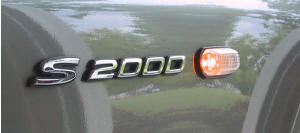
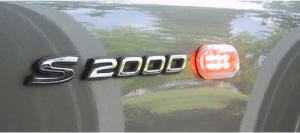
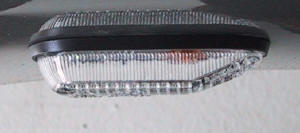
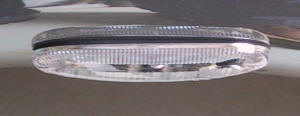
The VW light has a much lower profile, and comes with a soft rubber gasket so it fits tight.
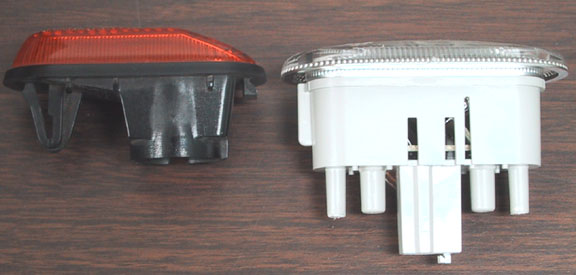
I've been wanting to do this mod to my car for a year. I never liked the cheesy-looking side marker lights on the S2000. They look like they were just stuck on the side of the car as an after-thought. The JDM clear markers are a big improvement, but I wanted something different.
So I decided to put VW Beetle lights on my car. Yes, you heard right, Volkswagen New Beetle side markers. Not only are they clear, but they are low-profile, and they use LED's instead of light bulbs. Now I'm definitely way cool, not to mention half a second faster in the quarter mile. Some of my friends think the NOS made the car faster, but I know better. It's actually my too-cool-for-school VW side markers.
This mod replaces the original ugly-as-hell side marker lights with cool-looking LED VW Beetle lights. This is not an easy mod. The work is not hard, just tedious, as you have to remove about 1/4" of the plastic VW light housing to get it to fit in the S2000 cut-out. The JDM lights change out in 2 minutes. It took me 2 hours to get the VW lights installed in my car.
| File and grind and otherwise mutilate VW plastic light housings. | |
| Loosen the inside fender well plastic cover (2 screws and some clips). | |
| Soldering iron to connect new wires to the VW lights. | |
| Crimp tool for wire connectors. | |
| Torx head wrench (T-20?) to fit screws on new lights. Use a small L-shaped wrench, not a screw-driver type, as there's not much room in the fender. You can use a hex wrench if you don't have a Torx. The screws don't take much torque to tighten. |
| Two VW Beetle side markers (turn signals) from a late 2000 through 2002 New Beetle. Part #1C0-949-101-A. Earlier lights use light bulbs and as such do not qualify as "cool". These are not cheap ($47 each from dealer), so you may want to try a junk yard. | |
| 18 gauge wire and 1/4" male spade wire connectors. |
Note: The VW lights are not sealed on the back side. I don't know if this will cause a problem or not, since the Honda fenders are shielded from rain and splashing, but not from humidity. You may want to use some good electrical tape or silicone sealant to seal up the back side of the housing. I taped mine. It's not pretty, but I'm not going to be looking at it.